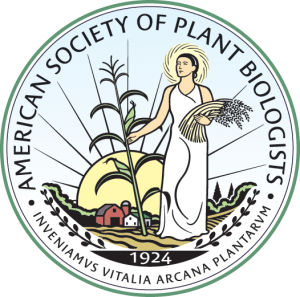Pioneer Member
DONORS
Scott Bingham
Kent Chapman
Denise Clark
Francisco Corpas
Robb Flynn
Bertram Jacobs
Cayle Lisenbee
Michael Mckinley
Brandon Moore
Rob Mullen
Stan Szarek
Leslie Towill
TESTIMONIALS
Francisco J Corpas – Between 1993 and 1995, I had the privilege of conducting my postdoctoral work with Professor Richard (Dick) Trelease, a highly respected researcher in the study of plant peroxisomes. After completing my PhD in Granada, Spain in 1992, where I focused on the oxidative metabolism of leaf peroxisomes from pea plants grown under salinity conditions, I was awarded a scholarship to continue my research at Arizona State University, Tempe, AZ. This opportunity presented a personal and scientific challenge for me. In January 1993, I traveled from Granada, Spain to Phoenix. Upon my arrival, Dick picked me up from the airport and assisted me in getting settled. When I joined his laboratory, he proposed a challenge to me. The scientific challenge was to work on the peroxisomal integral membrane proteins using cucumber seedlings. At that time, this area of plant peroxisomes was new and unexplored. Therefore, I started to work on this area. After employing various methodological approaches, such as using differential centrifugations followed by density gradients in sucrose, we initiated the characterization of the peroxisomal membrane protein (PMP) profile of peroxisomes from cucumber cotyledons. This allowed us to obtain specific antibodies against some PMPs and subsequently identify several proteins, including a membrane ascorbate peroxidase, an HSP72, and a porin-like protein. These findings represented a significant advancement in the study of plant peroxisomes.
Upon my return to Granada, I rejoined the laboratory of Prof. Luis A. del Río in a research center of the Spanish National Research Council (CSIC). Here, I continued my work with PMPs, shifting the focus to leaf peroxisomes and persisting in the identification of proteins involved in the generation of reactive oxygen species (ROS). Simultaneously, I began exploring other potential peroxisomal metabolic pathways, such as their capacity to generate nitric oxide (NO), which was largely unknown in plant cells at that time. This line of research has been a continuous pursuit for me.
I must acknowledge that during my time in Dick’s laboratory, we engaged in extensive conversations about “complicated and unexpected results,” which taught me to embrace new challenges throughout my scientific endeavors that align with those “complicated and unexpected” principles.
I’d like to finish by expressing that I have maintained my contact with Dick over the last 30 years because, for me, he was more than just a scientific supervisor during my postdoc, he became a friend whose influence I deeply value.
Bert Jacobs – When I came to ASU as a brand new Assistant Professor, Dick was already a senior faculty member and Professor. I remember Dick and I and several others had a meeting with a Dean to help establish an inter-disciplinary Molecular and Cellular Biology Program at ASU. I had never met with a Dean before and asked Dick if we should wear ties and jackets. He said NO! Administrators wear ties, faculty don’t. I have followed Dick’s sage advice throughout my career, wearing ties (when needed) when I was Director of the ASU School of Life Sciences, but not having put a tie around my neck since I left that position and gone back to being a faculty member. Thanks Dick.

